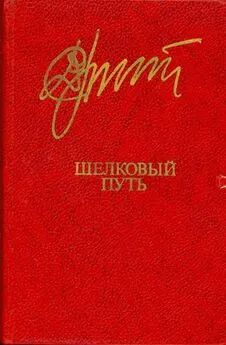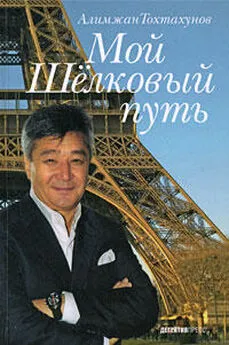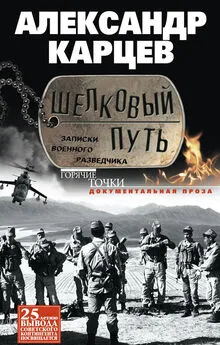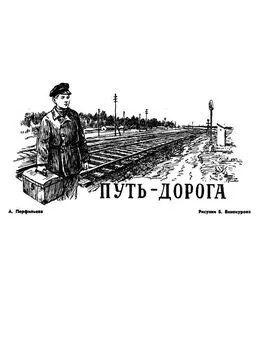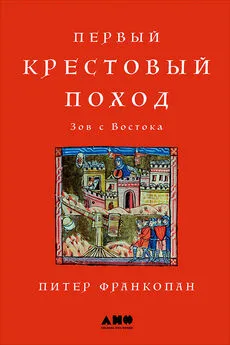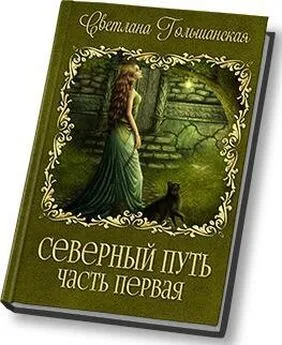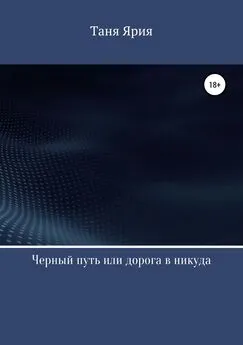Питер Франкопан - Шелковый путь. Дорога тканей, рабов, идей и религий
- Название:Шелковый путь. Дорога тканей, рабов, идей и религий
- Автор:
- Жанр:
- Издательство:Литагент 5 редакция
- Год:2017
- Город:Москва
- ISBN:978-5-699-95706-4
- Рейтинг:
- Избранное:Добавить в избранное
-
Отзывы:
-
Ваша оценка:
Питер Франкопан - Шелковый путь. Дорога тканей, рабов, идей и религий краткое содержание
Вы увидите, что история развивалась совсем не так, как мы привыкли изучать в школе. Так, столетия назад интеллектуальные центры мира, «Оксфорды» и «Кембриджи», «Гарварды» и «Йели», находились не в Европе, а в городах Средней Азии, куда и съезжалась вся просвещенная молодежь в поисках успеха.
Шелковый путь. Дорога тканей, рабов, идей и религий - читать онлайн бесплатно ознакомительный отрывок
Интервал:
Закладка:
4
Transparency International, Corruption Perception Index 2013 (www.transparency.org); Reporters without Borders, World Press Freedom Index 2013–2014 (www.rsf.org); Human Rights Watch, World Report 2014 (www.hrw.org).
5
Genesis 2:8–9. Чтобы понять месторасположение Райского сада, см. J. Dulumeau, History of Paradise: The Garden of Eden in Myth and Tradition (New York, 1995).
6
Мохенджо-Даро см. J. Kenoyer, Ancient Cities of the Indus Valley (Oxford, 1998).
7
Records of the Grand Historian by Sima Qian, Han Dynasty , tr. B. Watson, 2 vols (rev. edn, New York, 1971), 123, 2, рр. 234–235.
8
F. von Richthofen, ‘Über die zentralasiatischen Seidenstrassen bis zum 2. Jahrhundert. n. Chr.’, Verhandlungen der Gesellschaft für Erdkunde zu Berlin 4 (1877), рр. 96–122.
9
E. Said, Orientalism (New York, 1978). Также обратите внимание на положительную и в подавляющем большинстве случаев весьма романтизированную реакцию французских мыслителей, таких как Фуко, Сартр и Годар, на Восток и Китай, в частности R. Wolin, French Intellectuals, the Cultural Revolution and the Legacy of the 1960s: The Wind from the East (Princeton, 2010).
10
Bābur-Nāma, tr. W Thackston, Memoirs of Babur, Prince and Emperor (London, 2006), рр. 173–174.
11
W. Thackston, ‘Treatise on Calligraphic Arts: A Disquisition on Paper, Colors, Inks and Pens by Simi of Nishapur’, in M. Mazzaoui and V. Moreen (eds), Intellectual Studies on Islam: Essays Written in Honor of Martin B. Dickinson (Salt Lake City, 1990), р. 219.
12
Al-Muqaddasī, Aḥsanu-t-taqāsīm fī marifati-l-aqālīm , tr. B. Collins, Best Division of Knowledge (Reading, 2001), р. 252; Ibn al-Faqīh, Kitāb al-buldān , tr. Р. Lunde and C. Stone, ‘Book of Countries’, in Ibn Fadlan and the Land of Darkness: Arab Travellers in the Far North (London, 2011), р. 113.
13
Цитируется по N. di Cosmo, Ancient China and its Enemies: The Rise of Nomadic Power in East Asian History (Cambridge, 2002), р. 137.
14
Например, S. Freud, The Interpretation of Dreams, ed. J. Strachey (New York, 1965), р. 564; J. Derrida, Résistances de la psychanalyse (Paris, 1996), рр. 8–14.
15
C. Renfrew, ‘Inception of Agriculture and Rearing in the Middle East’, C. R. Palevol 5 (2006), рр. 395–404; G. Algaze, Ancient Mesopotamia at the Dawn of Civilization: The Evolution of an Urban Landscape (Chicago, 2008).
16
Herodotus, Historiai , 1.135, in Herodotus: The Histories, ed. and tr. A. Godley, 4 vols (Cambridge, MA, 1982), 1, рр. 174–176.
17
J. Curtis and St J. Simpson (eds), The World of Achaemenid Persia: History, Art and Society in Iran and the Ancient Near East (London, 2010).
18
Herodotus, Historiai, 8.98, 4, p. 96; D. Graf, ‘The Persian Royal Road System’, in H. Sancisi-Weerdenburg, A. Kuhrt and M. Root (eds), Continuity and Change (Leiden, 1994), рр. 167–189.
19
H. Rawlinson, ‘The Persian Cuneiform Inscription at Behistun, Decyphered and Translated’, Journal of the Royal Asiatic Society 11 (1849), рр. 1–192.
20
Ezra, 1:2. Также см. Isaiah, 44:24, 45:3.
21
R. Kent, Old Persian Grammar, Texts, Lexicon (New Haven, 1953), рр. 142–144.
22
Herodotus, Historiai, 1.135, 1, рр. 174–176.
23
Там же, 1.214, 1, p. 268.
24
Aeschylus, The Persians . Р. Briant, ‘History and Ideology: The Greeks and “Persian Decadence”’, in T. Harrison (ed.), Greeks and Barbarians (New York, 2002), рр. 193–210.
25
Euripides, Bakhai, in Euripides: Bacchae, Iphigenia at Aulis, Rhesus, ed. and tr. D. Kovacs (Cambridge, MA, 2003), p. 13.
26
Plutarch, Bioi Paralleloi: Alexandros, рр. 32–33, in Plutarch’s Lives, ed. and tr. B. Perrin, 11 vols (Cambridge, MA, 1914–1926), 7, рр. 318–326. Согласно известной мозаике, он носил счастливую одежду, A. Cohen, Alexander Mosaic: Stories of Victory and Defeat (Cambridge, 1996).
27
Quintus Curtius Rufus, Historiae Alexandri Magni Macedonis, 5.1, in Quintus Curtius Rufus: History of Alexander , ed. and tr. J. Rolfe, 2 vols (Cambridge, MA, 1946), 1, рр. 332–334.
28
M. Beard, ‘Was Alexander the Great a Slav?’, Times Literary Supplement, 3 July 2009.
29
Arrian, Anabasis, 6.29, in Arrian: History of Alexander and Indica, ed. and tr. P Brunt, 2 vols (Cambridge, MA, 1976–1983), 2, рр. 192–194; Плутарх говорил и о важности мирного и щедрого подхода Александра. Alexandros , 59, 1, p. 392.
30
Arrian, Anabasis, 3.22, 1, p. 300.
31
Quintus Curtius Rufus, Historiae, 8.8, 2, p. 298.
32
A. Shahbazi, ‘Iranians and Alexander’, American Journal of Ancient History 2.1 (2003), рр. 5–38. Также см. M. Olbryct, Aleksander Wielki i swiat iranski (Gdansk, 2004); M. Brosius, ‘Alexander and the Persians’, in J. Roitman (ed.), Alexander the Great (Leiden, 2003), рр. 169–193.
33
См., главным образом, Р. Briant, Darius dans l’ombre d’Alexandre (Paris, 2003).
34
О концепции «хуася» см. C. Holcombe, A History of East Asia: From the Origins of Civilization to the Twenty- First Century (Cambridge, 2010); информацию о стене см. здесь: Waldron, ‘The Problem of the Great Wall of China’, Harvard Journal of Asiatic Studies 43.2 (1983), рр. 643–663, и, главным образом, di Cosmo, Ancient China and its Enemies .
35
См. J. Romm, Ghost on the Throne: The Death of Alexander the Great and the War for Crown and Empire (New York, 2011). Существуют различные точки зрения, говорят, что Александр умер от тифа, малярии, алкогольного отравления (или болезни, похожей на это), инфекции, раны и даже что он был убит. См. A. Bosworth, ‘Alexander’s Death: The Poisoning Rumors’, in J. Romm (ed.), The Landmark Arrian: The Campaigns of Alexander (New York, 2010), рр. 407–411.
36
См. R. Waterfield, Dividing the Spoils: The War for Alexander the Great’s Empire (Oxford, 2011).
37
K. Sheedy, ‘Magically Back to Life: Some Thoughts on Ancient Coins and the Study of Hellenistic Royal Portraits’, in K. Sheedy (ed.), A lexander and the Hellenistic Kingdoms: Coins, Image and the Creation of Identity (Sydney, 2007), рр. 11–16; K. Erickson and N. Wright, ‘The “Royal Archer” and Apollo in the East: Greco-Persian Iconography in the Seleukid Empire’, in N. Holmes (ed.), Proceedings of the XIVth International Numismatic Congress (Glasgow, 2011), рр. 163–168.
38
L. Robert, ‘De Delphes à l’Oxus: inscriptions grecques nouvelles de la Bactriane’, Comptes Rendus de l’Académie des Inscriptions (1968), рр. 416–457. Перевод можно найти здесь: F. Holt, Thundering Zeus: The Making of Hellenistic Bactria (London, 1999), р. 175.
39
J. Jakobsson, ‘Who Founded the Indo-Greek Era of 186/5 BCE?’, Classical Quarterly 59.2 (2009), рр. 505–510.
40
D. Sick, ‘When Socrates Met the Buddha: Greek and Indian Dialectic in Hellenistic Bactria and India’, Journal of the Royal Asiatic Society 17.3 (2007), рр. 253–254.
41
J. Derrett, ‘Early Buddhist Use of Two Western Themes’, Journal of the Royal Asiatic Society 12.3 (2002), рр. 343–355.
42
B. Litvinsky, ‘Ancient Tajikistan: Studies in History, Archaeology and Culture (1980–1991)’, Ancient Civilisations 1.3 (1994), р. 295.
43
S. Nath Sen, Ancient Indian History and Civilisation (Delhi, 1988), р. 184. также см. R. Jairazbhoy, Foreign Influence in Ancient India (New York, 1963), рр. 48–109.
44
Plutarch, Peri tes Alexandrou tukhes he arête, 5.4 in Plutarch: Moralia, ed. and tr. F. Babitt et al., 15 vols (Cambridge, MA, 1927–1976), 4, рр. 392–396; J. Derrett, ‘Homer in India: The Birth of the Buddha’, Journal of the Royal Asiatic Society 2.1 (1992), рр. 47–57.
45
J. Frazer, The Fasti of Ovid (London, 1929); J. Lallemant, ‘Une Source de l’Enéide: le Mahabharata’, Latomus 18 (1959), рр. 262–287; Jairazbhoy, Foreign Influence , р. 99.
46
C. Baumer, The History of Central Asia: The Age of the Steppe Warriors (London, 2012), рр. 290–295.
47
V. Hansen, The Silk Road (Oxford, 2012), рр. 9–10.
48
Sima Qian, Records of the Grand Historian of China, 123, 2, р. 238.
49
Там же, 129, 2, р. 440.
50
H. Creel, ‘The Role of the Horse in Chinese History’, American Historical Review 70 (1965), рр. 647–672. В пещерах Дуньхуан на стенах можно найти много изображений небесных лошадей, см. T. Chang, Dunhuang Art through the Eyes of Duan Wenjie (New Delhi, 1994), рр. 27–28.
51
Recent excavations of the Emperor Wu’s mausoleum in Xi’an in 2011, Xinhua, 21 February 2011.
52
Huan Kuan, Yan Tie Lun, цитируется по Y. Yu, Trade and Expansion in Han China: A Study in the Structure of Sino-Barbarian Economic Relations (Berkeley, 1967), р. 40.
53
Например, Sima Qian, Records of the Grand Historian of China, 110, 2, рр. 145–146. Некоторые комментариии относительно образования, обычаев и моды хунну см. на стр. 129–130.
54
См. Yu, Trade and Expansion in Han China, рр. 48–54.
55
Там же, р. 47, n. 33; также см. R. McLaughlin, Rome and the Distant East: Trade Routes to the Ancient Lands of Arabia, India and China (London, 2010), рр. 83–85.
Читать дальшеИнтервал:
Закладка:


